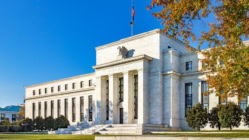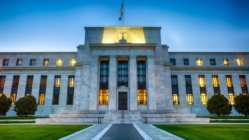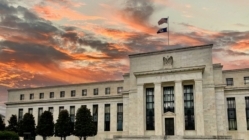
The Dreaded Debt Ceiling Crisis
The dreaded debt ceiling crisis has been in the news now for a few months, and it is scaring the heck out of everyone for a very good reason.
If the debt ceiling is not raised by early June, home sales will come to a standstill, mortgage rates will shoot through the roof, and the economy will pretty much collapse.
The debt ceiling is the maximum amount of money that the U.S. government is allowed to borrow by law. And, as we all know, the government needs to borrow tens of billions every month just to pay its bills because it is not collecting enough tax revenues to cover its obligations.
If the debt ceiling is not raised, the government will not be able to borrow money, preventing it from meeting many of its obligations – including the interest payments on its massive debt load.
Depending on how long the government is not allowed to borrow after it hits its ceiling, it could be catastrophic for a few reasons:
(1) The instant drying up of all of those government expenditures and interest payments would ripple through the entire world economy, as millions of people and institutions rely on those funds, and even more people and institutions rely on the people who are receiving government funds. In other words, the debt ceiling default could foster a cascading wave of defaults; and
(2) Defaulting on U.S. debt instruments (Treasury Bills) would send similar cascading ripple effects throughout the entire world financial system. This is because U.S. treasuries are considered the failsafe bedrock of the world’s financial system, as they serve as guaranteed returns for investors, as safe haven investments during times of crisis, and as the best possible collateral for borrowers.
Zillow recently weighed in on this topic with this well-circulated article: A Debt Ceiling Default Would Send the U.S. Housing Marketing Into a Deep Freeze.
The article is worth a skim at least, as it sets out much of what I say above but in more detail.
In summary, in the event of a prolonged default, the author projects (1) unemployment will climb to 8.3% from 3.4% now; (2) mortgage rates will jump to 8.4%; and (3) home sales activity will drop by 23%.
That of course is one projection based largely on another article by Moody’s Analytics. But, according to Brent Johnson, there will be so many “knock-on” effects in the event of a default that nobody really knows what will happen.
There Very Likely Will Be No Default
BUT – HERE IS THE REAL RUB: There very likely will be no default.
The National Real Estate Post published this short video today, Lights, Camera, Drama!, saying “it would be political suicide for either party not to extend the debt ceiling.”
There is, however, one theory circulating that supports a potential default, and it goes like this: the Biden Administration knows we are facing a nasty recession. So, they might allow a debt ceiling default to take place with the hope of blaming Republicans for it – and then further blaming the recession on the debt ceiling crisis that the Republicans caused. And of course, some Democrats are accusing the GOP of wanting to do the same thing – forcing a debt ceiling default and then blaming the Biden administration for all of the resulting problems.
I remain convinced, however, that we will not see a default and that things will be business as usual (as screwed up as that is) by June.
Sign up to receive our blog daily
























